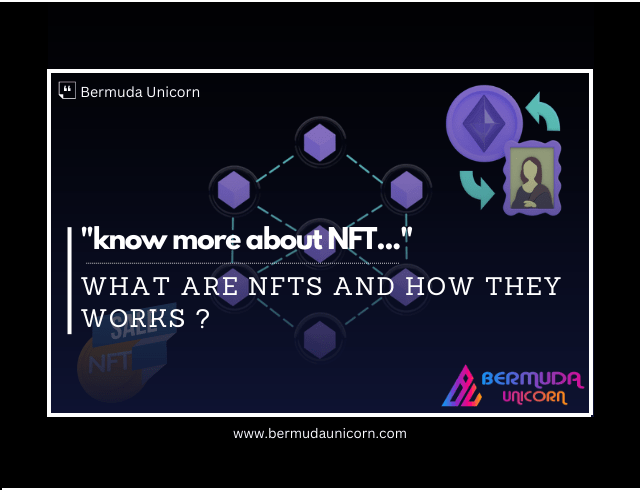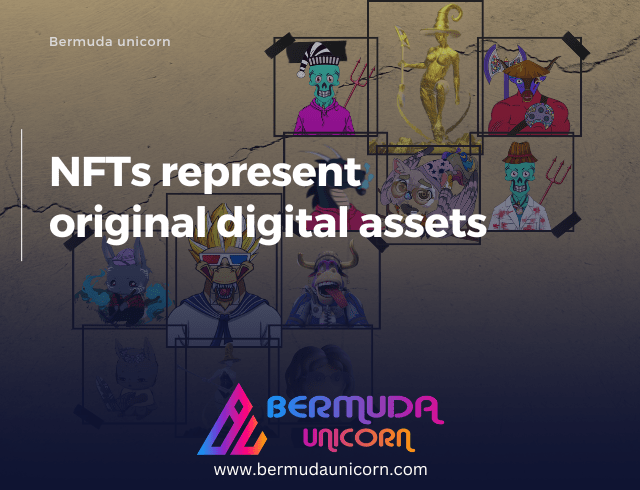![]()

The full form of NFT is Non-fungible tokens, which are unique identifier codes and metadata that distinguish cryptographic assets on blockchains from each other. Unlike cryptocurrencies, they cannot be traded or exchanged for equivalence. This is different from a fungible token, such as a cryptocurrency, which is identical to each other and can therefore serve as a means of commercial transactions.NFTs revolutionized digital assets, providing secure ownership and new opportunities for creators, making the NFT token list vital to exploring these possibilities.
A Detailed Look at Non-Fungible Tokens (NFTs)
The NFT is based on the ERC-721 standard. The ERC-721, developed by ERC-20 smart contracts, defines the minimum interface required to exchange and distribute game tokens – ownership details, security, and metadata. The ERC-1155 standard further expands the concept by reducing the transaction and storage costs of NFTs and the number of types of non-fungible tokens in single contracts. NFTs can be used in various use cases.
NFTs can eliminate intermediaries, simplify transactions, and create new markets. For example, they provide the ideal vehicle for digitally representing physical assets such as real estate and artworks. Because NFTs are based on blockchains, they can also eliminate intermediaries, connect artists with the public, or manage identities. Most current NFT markets focus on collections, such as digital works of art, sports cards, and rarities.
The NBA Top Shot is perhaps the most evocative place, where collectors gather NBA moments as non-fungible tokens on digital cards. Some of these cards fetch millions of dollars in sales. Recently, Jack Dorsey, the CEO of Twitter (TWTR), tweeted a link to the first-ever tokenized tweet he had written, “I just set up my Twitter.” The NFT version of this tweet was sold for over $2.9 million.
The $69 million NFT Sale!
In early March 2021, a group of digital artists, Beppe, created NFTs that were sold for over $69 million. This sale set a new record for the highest-priced digital art to date. The artwork was a collage consisting of Beeple’s first 5,000 days of work.
How to create NFTs?
NFTs are created through a process called minting, where their information is published on a blockchain. This generates new blocks and validators that check and store the NFT data. Smart contracts help with ownership and NFT transfers. The NFT marketplace is like a busy online platform where people can buy, sell, and trade unique digital items represented as NFTs. It’s a lively community for creators, collectors, and fans.
As tokens are created, a unique identifier is assigned directly to a blockchain address. Each Token has an owner, and ownership information (i.e., the address where the Token is generated) is made public. Even if you make 5,000 NFTs of the same item (i.e., general admission tickets to music festivals), each ticket has a unique identifier and can be distinguished.
What is Fungibility in Blockchain? Why are NFTs Non-Fungible?
Like physical currencies, cryptocurrencies can generally be traded or exchanged from a financial point of view. For example, a bitcoin is always equal to another bitcoin on any particular exchange rate, just like every dollar bill in the United States has an implicit exchange rate of $1. This fungibility makes cryptocurrencies suitable for secure transactions in the digital economy.NFTs are unique digital assets recorded on a blockchain, and the NFT token list provides a curated collection for users to explore and trade these assets securely.
NFTs are different from regular cryptocurrencies because they are unique and cannot be replaced. Blockchain technology makes it possible to track the history of each NFT publicly. Owning a special NFT, like one previously owned by a famous person or one that has never been traded, can make it more valuable, just like rare collectibles. This uniqueness and scarcity make NFTs very special and highly sought after by collectors.
An NFT is like a digital passport for assets, as each token has a distinct and individual identity that sets it apart from others. Just like merging different traits to create a new character in a game, NFTs can be combined to produce a new and unique one. Similar to Bitcoin, NFTs have property details that make them easy to identify and transfer between owners. Owners can also add extra information and attributes to their NFTs. For instance, tokens representing coffee beans can be labeled as “fair trade,” and artists can include their signatures in the metadata of their digital artworks. This makes NFTs flexible and versatile for various uses and creative expressions.
Some Examples of NFTs
NFT’s most famous use case is Crypto Kitties. Released in November 2017, it’s a digital cat with a unique ID on the Ethereum blockchain. Each kitty is one-of-a-kind and has a price in Ether. They breed and produce offspring with different attributes. Shortly after launch, Crypto Kitties gained a huge fan base, with $20 million in Ether spent by fans to buy and care for them. Some even spent over $100,000 individually. The NFT marketplace enables trading and ownership of digital art and unique assets on the blockchain, benefiting creators and collectors alike.
The Bored Ape Yacht Club is causing arguments because it’s expensive, famous people like it, and there have been thefts of its 10,000 NFTs. NFTs, like Crypto Kitties and the Bored Ape Yacht Club, have important uses for businesses. They are used in private equity and real estate deals. By allowing different types of tokens in contracts, it becomes possible to use cash for different NFTs (from art to real estate) in one financial transaction. This is a big deal for various industries beyond just art and gaming.

Importance of NFTs
NFTs are like cryptocurrencies but more advanced. In the finance world, we have complex trading and loan systems for assets like real estate, loans, and artworks. NFTs change this by representing physical assets digitally. This is not new, but NFTs use smart contracts with strong security for quick and safe transactions.
NFTs have clear advantages in making markets more efficient. When we turn physical assets into digital ones, it eliminates the need for middlemen and makes things simpler.
For artworks, NFTs, whether they represent digital or physical art, let artists connect directly with their audience without involving agents.
In business, NFTs can improve processes. For example, NFTs can be used for wine bottles, making it easier to track where they came from, how they were made, and where they are being sold in the supply chain.
Ernst & Young Consulting has created solutions for its clients using NFTs. NFTs are also great for managing identities. Think of physical passports that need to be shown at entry and exit points. If we turn each passport into an NFT, they will have unique identification features, making it easier for the authorities to manage entry and exit processes. If we expand this idea, NFTs can also be used for digital identity management.
Real and Virtual World of NFTs
NFTs allow people to invest in physical and digital assets easily. These NFTs are like Art, real estate, etc. which are very common things in life. With digital real estate, different owners can share it, increasing its value and earnings. Similarly, digital modes of painting can have many owners, each owning a part of it. This tokenization can be applied to different assets, making them easier to access and more valuable.
NFTs provide exciting chances to create new markets and investment opportunities. Picture a property divided into different sections, like beachside, entertainment district, and residential areas. Each division has its own unique characteristics and location, represented by a distinct NFT. This makes real estate transactions easier with streamlined information. With NFTs, it becomes simpler to access and trade fractional ownership in properties with different prices and features.
Decentraland is a V.R. platform on the Ethereum blockchain that has started this concept. As NFTs become more sophisticated and integrated into financial infrastructure, it is possible to implement the concept of digital land (value and location vary) in physical reality.
The Bottom Line
NFTs are special digital versions of assets that exist on blockchains. As the world explores how decentralized and unchangeable ledgers can enhance safety and speed in transactions, NFTs play a crucial part in this development. These assets keep a record of transaction history and have the potential to make trade simpler, becoming key elements in the emerging digital world.
KEY POINTS TO REMEMBER ABOUT NFT
- NFT(unfavorable Token)is a unique cryptography token that exists on the blockchain and cannot be copied.
- NFT can represent real objects, such as artworks and real estate.
- The “tokenization” of these tangible assets in the real world makes them more efficient in buying, selling, and trading and reduces the likelihood of fraud.
- NFT can also represent individual identities, property rights, etc.
- Collectors are looking for NFTs because their value initially increased, but it has been moderated since then.
FAQs on NFT Meaning
The most commonly asked questions about NFT Meaning are given below:
1. What Does Non-Fungible Mean?
Fungibility is an economic term that denotes the interchangeability of specific goods. For instance, oil barrels can be interchangeable with other oil barrels. Similarly, a dollar is equivalent to any other dollar (or a quarter, etc.). On the other hand, non-fungible refers to elements that are unique or distinguishable. For example, if you take a dollar bill, draw a famous artist’s picture, and sign it, it becomes unique and distinct from any other dollar bill, potentially holding more value than its face value.
2. What Are Some Examples of Non-Fungible Tokens?
Non-fungible tokens (NFTs) can represent different things digitally, like digital artworks and real assets. They can also be used for in-game items, collections, domain names, and event tickets. NFTs are versatile and can be applied in various ways.
3. How Can I Buy NFTs?
Many NFTs can only be purchased using Ether, so storing certain of these cryptographic currencies in digital wallets is generally the first step. Then you can buy NFT through any online NFT market, including BermudaUnicorn, Open Sea, Raribleand, super rare. Etc.
4. Is NFTs Safe?
Non-fungible tokens, just like cryptocurrency, use blockchain technology and are generally considered secure. Their distributed nature due to blockchains makes NFTs tough to hack. However, you could lose access to your NFT if the hosting platform goes out of business.
5. Is an NFT a good investment?
NFTs have great financial potential, especially while reselling. NFTs’ resale value can be a substantial profit avenue for investors.
6. Can buying NFT make you rich?
At this point, NFTs are nothing more than speculations. However, you can generate long-term wealth in the NFT space with the right discipline and investment principles for buying stocks.
NFTs and the NFT token list have redefined digital ownership, presenting a vast array of unique assets for creators and users on the blockchain.
